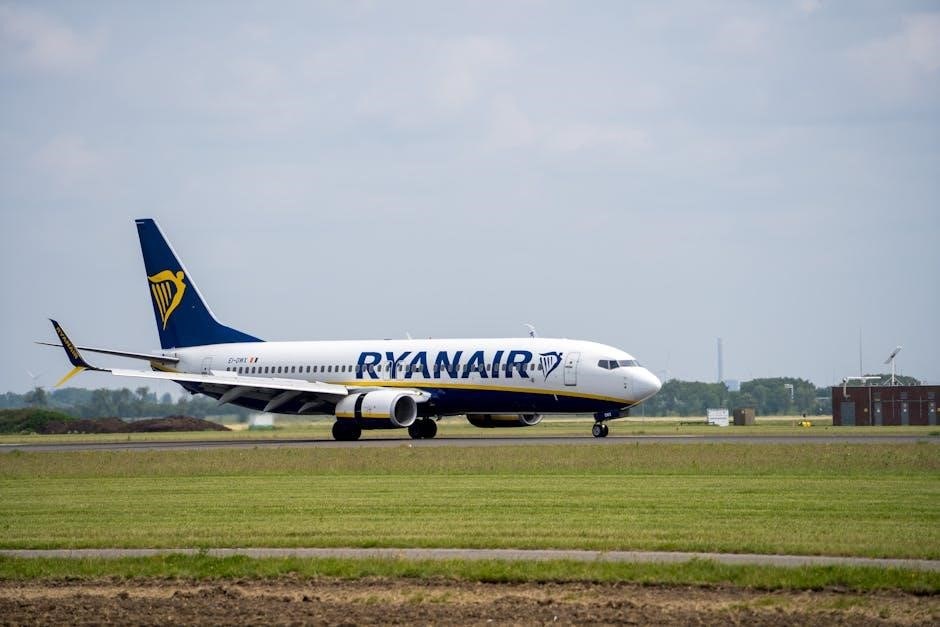Integrated flight instruction combines ground and flight training, emphasizing visual and instrument references to develop piloting skills. It ensures a smooth transition from basic to advanced flight maneuvers.
1.1 Definition and Purpose
Integrated flight instruction is a training method where students learn to perform flight maneuvers using both external visual references and flight instruments from the start. Its purpose is to create a balanced learning environment, combining ground and flight training to enhance safety, efficiency, and skill development. This approach ensures pilots can transition smoothly between visual and instrument flying, developing habit patterns and decision-making abilities essential for all flight conditions.

1.2 Evolution of Flight Training Methods

Flight training has evolved from fragmented ground and flight lessons to integrated approaches, emphasizing a blend of theory and practical skills. Early methods focused solely on visual references, while modern techniques incorporate instrument flying from the outset. This shift ensures pilots develop comprehensive skills, preparing them for diverse flight scenarios. The integration of ground school with flight training enhances learning efficiency, leading to safer and more competent aviators. This evolution reflects the aviation industry’s commitment to producing well-rounded professionals.

Key Concepts in Integrated Flight Instruction
Integrated flight instruction emphasizes combining ground and flight training, using visual and instrument references, and developing habit patterns to enhance piloting skills and decision-making abilities effectively.
2.1 Combining Ground and Flight Training
Integrated flight instruction seamlessly combines ground school with practical flight training, ensuring students understand both theoretical and practical aspects of aviation. Ground training covers essential topics like weather, regulations, and aircraft systems, while flight training applies this knowledge in real-world scenarios. This dual approach reinforces learning, allowing students to progress systematically and retain information more effectively. By integrating these components, instructors create a cohesive learning environment that prepares students for the demands of piloting an aircraft safely and efficiently.
2.2 Use of Visual and Instrument References
Integrated flight instruction emphasizes the simultaneous use of visual and instrument references, enabling pilots to develop a comprehensive understanding of aircraft control. Visual references, such as the natural horizon, are used to establish attitude and orientation. Instrument references, like the altimeter and heading indicator, provide precise data for maintaining performance. By combining these methods, pilots can transition smoothly between visual flight rules (VFR) and instrument flight rules (IFR), enhancing their ability to handle various flight conditions and ensuring safer, more efficient operations.
2.3 Development of Habit Patterns
Integrated flight instruction fosters the development of consistent habit patterns by teaching students to rely on both visual and instrument references from the outset. This approach ensures that pilots develop automatic responses to various flight scenarios, enhancing their ability to maintain control and situational awareness. By integrating these references early in training, instructors help students build strong foundational skills, such as scanning techniques and cross-checking, which are essential for safe and effective flight operations. This method promotes adaptability, enabling pilots to transition seamlessly between different flight conditions.
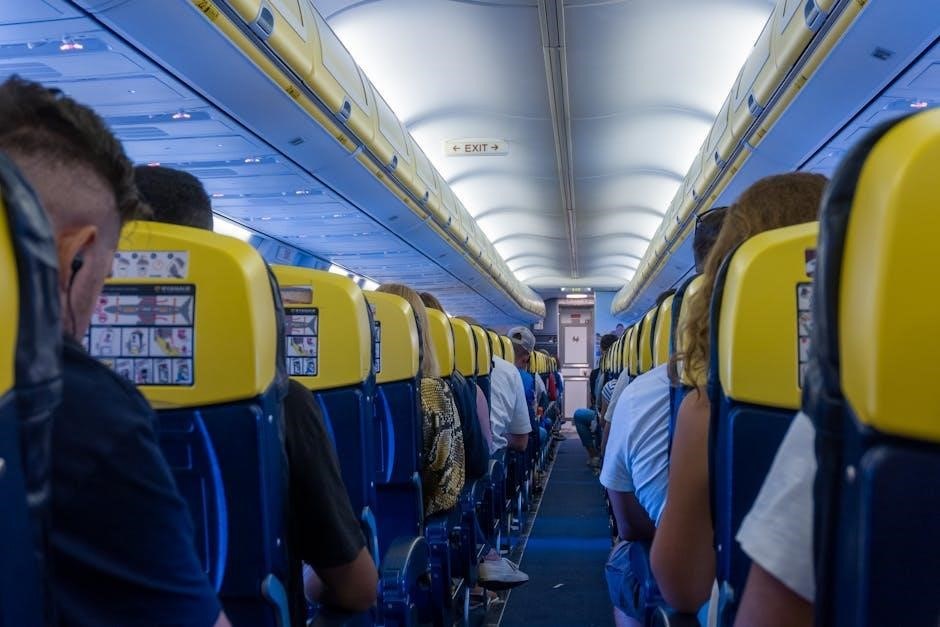
Techniques of Integrated Flight Instruction
Integrated flight instruction employs structured techniques such as demonstration-performance, positive control exchanges, and managing distractions to enhance learning. These methods ensure a balanced approach to flight training.
3.1 Demonstration-Performance Training Delivery
Demonstration-performance training delivery is a cornerstone of integrated flight instruction. Instructors first demonstrate maneuvers, allowing students to observe and understand techniques visually. Students then replicate these actions, with instructors providing immediate feedback. This method enhances learning by bridging the gap between theory and practice. It ensures students develop muscle memory and proper habit patterns, critical for safe and effective flight operations. The structured approach facilitates gradual skill progression, building confidence and competence in a logical sequence. This technique is particularly effective in integrating ground and flight training seamlessly.
3.2 Positive Exchange of Flight Controls
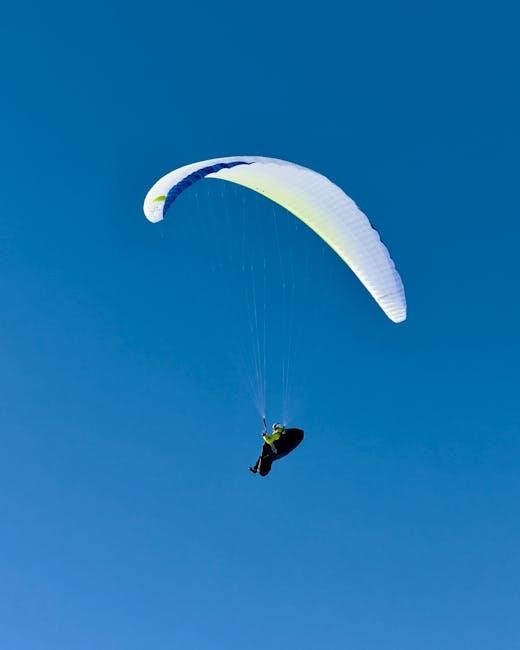
Positive exchange of flight controls is a critical component of integrated flight instruction, ensuring a smooth and safe transfer of control between instructor and student. This method involves clear communication, with the student ready to take control and the instructor gradually relinquishing it. Verbal confirmation is essential, such as the student stating, “I have control,” followed by the instructor responding, “You have control.” Proper hand positioning and awareness of the aircraft’s attitude are emphasized to maintain control and safety. This technique fosters effective coordination and enhances the learning environment.
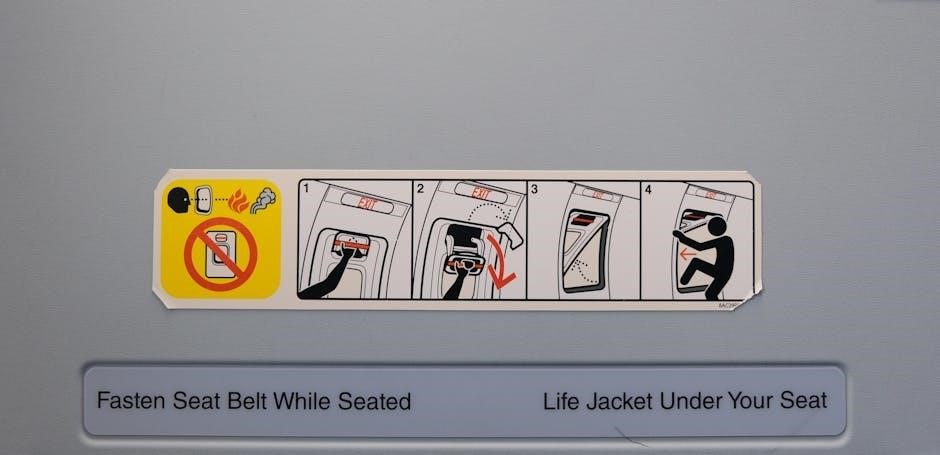
3.3 Managing Distractions and Sterile Cockpit
Managing distractions and maintaining a sterile cockpit are vital in integrated flight instruction. Instructors teach students to minimize interruptions, focus on essential tasks, and avoid non-essential conversations during critical phases of flight. A sterile cockpit ensures all attention is directed toward safe aircraft operation. Techniques include setting clear priorities, using checklists, and encouraging disciplined communication. These practices enhance situational awareness, reduce errors, and promote a safe learning environment, aligning with industry standards and safety protocols.
Obstacles to Learning in Integrated Flight Instruction
Impatience and distractions are significant obstacles in integrated flight instruction, hindering skill development and focus. Structured pathways and clear goals help mitigate these challenges effectively.
4.1 Impatience and Its Impact
Impatience is a critical obstacle in integrated flight instruction, often leading to rushed decisions and poor technique. Students may skip foundational steps, impairing their ability to master complex maneuvers. Instructors must address this by setting clear, incremental goals and fostering a calm, focused learning environment. Without patience, the integration of ground and flight training becomes disjointed, hindering the development of essential piloting skills and increasing the risk of errors during critical phases of flight.
4.2 Overcoming Common Challenges
Overcoming challenges in integrated flight instruction requires structured learning pathways and clear, incremental goals. Instructors should broke tasks into manageable steps, ensuring students grasp fundamentals before advancing. A distraction-free environment and consistent feedback are essential. Encouraging active participation and addressing errors promptly helps build confidence. By integrating ground and flight training seamlessly, instructors can mitigate obstacles, ensuring students progress logically and effectively. This approach fosters a deep understanding of flight principles and enhances overall piloting proficiency.

Assessment and Evaluation in Integrated Flight Instruction
Assessment evaluates piloting skills and decision-making, using tools like PAVE and DECIDE models. Regular feedback ensures progress, focusing on safe, effective flight operations and continuous improvement.
5.1 Evaluation of Piloting Ability
Evaluation of piloting ability in integrated flight instruction involves assessing a student’s mastery of both visual and instrument reference skills. Instructors use standardized criteria to measure consistency, control, and situational awareness. Ground training assessments ensure theoretical knowledge aligns with practical skills, while flight evaluations focus on maneuver precision and decision-making. Tools like the PAVE and DECIDE models help instructors identify areas needing improvement, ensuring a balanced approach to skill development. Regular feedback and structured pathways for learning are essential to track progress and achieve competency.
5.2 Aeronautical Decision-Making (ADM)
Aeronautical Decision-Making (ADM) is a critical component of integrated flight instruction, emphasizing structured approaches to risk management. Instructors teach students to use models like DECIDE and PAVE to evaluate factors such as Pilot, Aircraft, Environment, and External pressures. By integrating these tools into ground and flight training, students develop the ability to make sound judgments, reducing errors and enhancing safety. ADM is reinforced through real-world scenarios, ensuring pilots can apply these skills effectively in diverse flight conditions, fostering a proactive approach to decision-making.
5.3 Using PAVE, CARE, and DECIDE Models
The PAVE, CARE, and DECIDE models are essential tools in integrated flight instruction, guiding pilots in structured decision-making. PAVE assesses factors related to the Pilot, Aircraft, Environment, and External pressures. CARE evaluates Consequences, Alternatives, Resources, and Execution, while DECIDE provides a step-by-step framework for risk management. Instructors integrate these models into training, enabling students to systematically analyze situations, prioritize safety, and make informed decisions. By mastering these models, pilots enhance their ability to manage risks and respond effectively to challenges during flight operations.
Safety Considerations in Integrated Flight Instruction
Safety is paramount in integrated flight instruction, emphasizing risk assessment, adherence to protocols, and maintaining situational awareness to ensure secure training environments and effective learning outcomes.
6.1 Prioritizing Safety in Training
Safety is the cornerstone of integrated flight instruction, ensuring a secure learning environment. Instructors emphasize adherence to protocols, situational awareness, and risk assessment. By integrating safety into every training phase, students develop habits that minimize hazards. Regular briefings and debriefings reinforce safe practices, while structured pathways for learning ensure consistent adherence to safety standards. This approach not only protects students but also prepares them to manage real-world aviation challenges effectively, fostering a culture of safety from the outset of training.
6.2 Integrating Safety into Curriculum
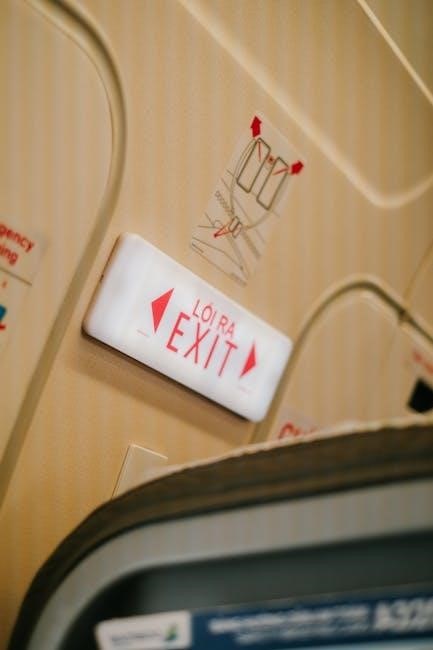
Integrated flight instruction seamlessly incorporates safety principles into the curriculum, ensuring they are not an afterthought. Each lesson includes hazard identification and risk management, using models like PAVE and DECIDE. Instructors emphasize sterile cockpit protocols and distraction management, embedding these practices into both ground and flight training. By aligning safety with learning objectives, students develop a proactive approach to risk mitigation. This holistic integration ensures safety becomes second nature, enhancing overall flight proficiency and decision-making skills throughout their aviation career.
Practical Strategies for Instructors
Instructors employ structured lesson plans, demonstration-performance methods, and positive control exchanges to enhance integrated flight training effectiveness and ensure students achieve proficiency in a logical progression.
7.1 Structured Pathways for Learning
Structured pathways in integrated flight instruction ensure a logical progression of skills, combining ground and flight training seamlessly. This approach uses pre-defined milestones to manage learning effectively, ensuring students grasp foundational concepts before advancing. By integrating theory with practical application, instructors create a cohesive educational framework. Clear, step-by-step goals guide students, fostering a deeper understanding of flight maneuvers and decision-making processes. This method not only enhances retention but also prepares learners for real-world aviation challenges, emphasizing safety and efficiency in skill development.
7.2 Handling Unplanned Events
Integrated flight instruction emphasizes preparedness for unexpected situations through structured pathways and adaptable strategies. Instructors are trained to maintain control and student confidence during unplanned events, ensuring safety remains paramount. By integrating contingency planning into the curriculum, learners develop the ability to manage distractions and unexpected challenges effectively. This approach fosters a proactive mindset, enabling instructors to guide students seamlessly through unforeseen circumstances while adhering to safety protocols and logical decision-making processes.

Real-World Applications of Integrated Flight Instruction
Integrated flight instruction is widely used by airlines and training programs, combining ground and flight training to produce skilled pilots efficiently and effectively.
8.1 Case Studies and Success Stories
Real-world applications of integrated flight instruction are evident in programs like EFT’s ATPL course, which combines 900 hours of ground training with 250 hours of flight instruction. This structured approach ensures students progress logically, mastering skills efficiently. Airlines like flydubai have adopted similar models, reducing training time while maintaining high safety standards. Such programs highlight the effectiveness of integrated instruction in producing competent pilots. Success stories often emphasize reduced training durations and improved skill retention, demonstrating the method’s practical benefits in real-world aviation training environments.
8.2 Industry Examples and Programs
Flight schools worldwide adopt integrated flight instruction, such as EFT’s ATPL program, combining 900 hours of ground training with 250 hours of flight instruction. Airline training programs, like flydubai’s initiative in Dubai, emphasize integrated methods to enhance pilot proficiency. These programs demonstrate practical applications of integrated instruction, ensuring seamless skill progression and adherence to safety standards. Real-world examples highlight efficiency in training time and improved student outcomes, showcasing the industry’s commitment to modern, effective flight education methods.
